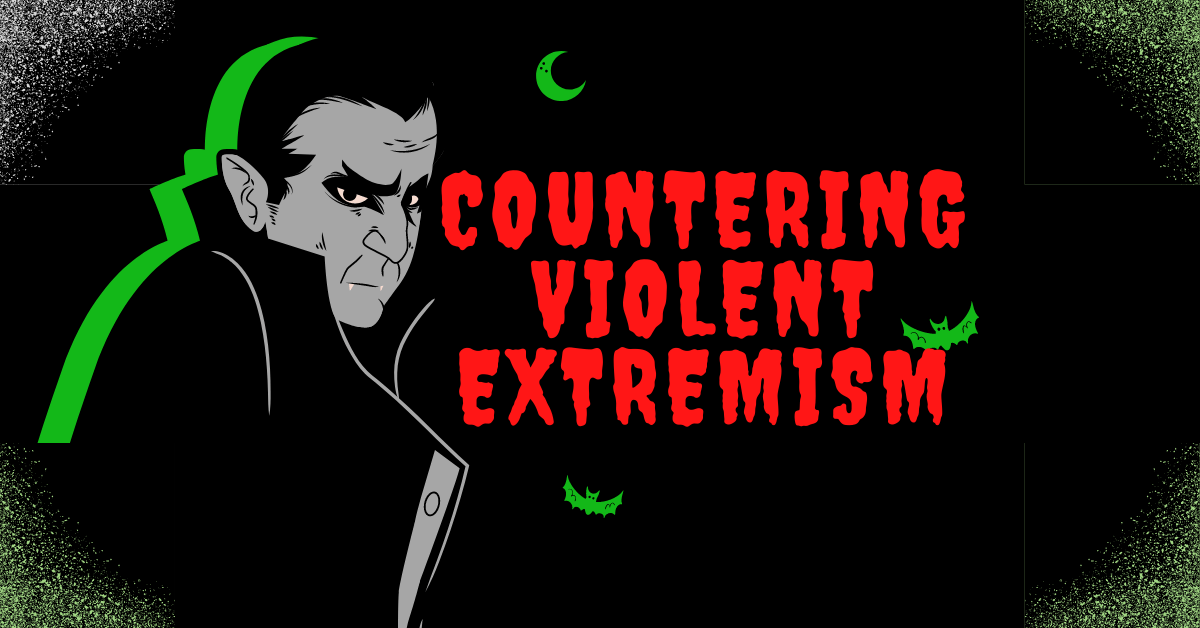Due to the evolving character of conflicts, countering violent extremism (CVE) has grown to be a challenging challenge on a global scale. In order to solve the problem, this article looks into the phenomenon of violent extremism and the factors that have contributed to it in Pakistan during the last two decades. Additionally, the effectiveness and execution of Pakistan’s CVE program’s policies are examined. Pakistan is presently dealing with a number of difficulties. One of the main difficulties Pakistan’s security faces is the phenomenon of violent extremism. The persistent causes of violent extremism, the rise of terrorist organizations that promote it, and their connections to hostile foreign agencies not only disturb Pakistan’s social structure but also have a negative impact on the country’s growth and economy.
Introduction
Since its independence, Pakistan has had various but connected clerical, sectarian, and religious disputes that have become violent. Pakistan is the most hit by ethnic and religious radicalization, which is encouraged by both internal and external players who are giving both religious and non-religious militancy a narrative and finance. However, since Pakistan and the US joined forces to fight communism in South Asia, notably in Afghanistan, the degree of violent extremism has multiplied. The effects of the Taliban’s formation in Afghanistan, the 9/11 attacks on the US, and the ensuing US War on Terror (WoT) on Pakistan is much worse than anybody could have predicted.
The social fabric of Pakistan’s society has been severely disrupted by its partnership with the US in the War on Terror. The security situation in Pakistan has been severely impacted by the emergence of terrorism since 9/11. Pakistan has seen significant losses in terms of lives, possibilities for economic growth, and infrastructural destruction. More than 81,000 lives have been lost as a result. According to the Economic Survey of Pakistan, the direct and indirect costs of terrorism in Pakistan during the previous 14 years were US$106.98 billion. However, due in part to military operations in tribal regions and the Karachi operation, the annual losses from terrorism decreased by a third to US$4.5 billion in 2014–15. In addition, Pakistan has paid for damages to hospitals, schools, and other infrastructure because of its collaboration with the US in the War on Terror.
The rise of terrorism and extremism has had a negative impact on Pakistan. Pakistan has stayed dedicated to eradicating terrorism while suffering significant casualties. Given the circumstances that contribute to violent extremism, combating it is a difficult effort that depends not only on the government of Pakistan’s intentions but also on foreign assistance.
Approach to the Study
The issue of rising religious extremism and intolerance that results in violence is hotly disputed, but there is little research on who commits these acts of extremism, how and why they occur, and how the government has responded to and handled the issue in the context of existing legislation. This study’s three sections serve this objective.
The first section identifies the flaws in explanations of violent extremism caused by a sole dependence on the works written by Western scholars. The second section explores a strategy for comprehending the motivations behind violent extremism as well as the concept of an international CVE model to determine whether it can be adopted and put into reality in other nations, notably Pakistan. The sectors that provide significant security threats for Pakistan are examined in the third section of the article. It examines the causes of violent extremism in Pakistan as well as the attempts made by the government to stop it. This paper’s main objective is to determine if Pakistan’s CVE strategy can be categorized as one that satisfies the standards of the worldwide, or more specifically, the Western model of CVE strategy.
Defining the Term Violent Extremism
Different definitions and analyses of violent extremism, a complicated issue, are used in academic settings. In different communities, depending on their particular structures, it is viewed and tolerated in different ways. Additionally, phrases like radicalism and terrorism are used to describe violent extremism interchangeably. The treatment of radicalization and radicalism as separate from extremism and terrorism is something that academics and researchers are cognizant of. The reason is that radicalization carries both good and bad meanings. However, this does not preclude radicals from becoming extremists or terrorists as radicalization can result in extremism.
According to Schmid, who distinguishes between extremism and radicalism, the former “tend to be closed-minded supremists while the latter tend to be open-minded egalitarians.” According to Bockstette, terrorism is a fight between two asymmetrical groups that combines psychological and tactical components. Then the weaker one reacts violently. The media is a tool used in terrorism to influence the public.
According to Holmer, there are several social, psychological, and push variables that influence violent extremism in various countries, making the very term ambiguous and unexpected for any model of radicalization. Most of the time, it is difficult to discern between criminal violence and extremist violence because there is a lack of awareness of gray areas, a poor system for dealing with non-state actors, and incorrect contextualization.
Extremism develops from polarized ideological attitudes and behaviors that lead to a sense of superiority over other people. It also results from conflicts between official ideology and public belief, socio-politico-economic inequalities, differences in the goals of big powers, and their use of violent means. Violent extremists are those who “advocate or engage in ideologically motivated violence to accomplish political aims,” according to the US Department of Homeland Security.
The Idea Behind Countering Violent Extremism
Among practitioners and policymakers, CVE has gained popularity. Due to the evolving nature of terrorism, the emergence of decentralized actors, and the self-radicalization of small groups, it has become an area of policy and practice. It focuses on strengthening communities that are susceptible to radicalization in order to resist the impact and pull of terrorist recruiting. Additionally, it was developed by those responsible for formulating national and international security policies as part of a larger counterterrorism initiative.
CVE is a gentle counterterrorism strategy. Many Western nations that have their own CVE initiatives, which range from interaction to influencing public opinion, would like to see Muslim countries follow their lead. As violent extremism has become more prevalent, counterterrorism has characterized its mission as combating it. Daniel Benjamin defined CVE as “efforts to prevent individuals most at risk of radicalization from becoming terrorists” in 2010. This is done by giving people the tools to challenge the ideologies and rhetorical narratives that give rise to violent extremism.
More significantly, there has been much research done on the violent extremism that is common in the Muslim world as well as the people and organizations who participate in or support extremist activities. However, it is important to use a comprehensive approach to study the drivers of violent extremism in the Muslim world24 as well as the one popular in the West. This goes beyond just disregarding some of the most pervasive myths in the discourse that associate violent extremism with Islam.
Challenges to Pakistan in Countering Violent Extremism
It is evident from examining the numerous variables described above that each has contributed to the violent extremism present in Pakistan. Pakistan’s physical and human security are under attack from several directions, including the international, regional, and internal environments. Some of these result from intolerance, extremism, militancy, and terrorism in both the countryside and the cities, while others are brought on by its history of relations with regional and extra-regional powers. Many people believe that economic instability, sectarianism, and ethnicity are the main factors contributing to Pakistan’s internal security threats. These factors also coincide with the nation’s poor governance, political unrest, and grievances between the provinces, as well as economic inequality and illiteracy, all of which are negatively impacting the nation.
It is crucial to realize that understanding CT and CVE activities in Pakistan requires delving into the issues’ historical, economic, social, political, and ideological origins. With an 184 million population, it is a melting pot of religious, regional, and governmental identities. The majority of Pakistani society may be described as being somewhere between the two extremes, therefore regardless of whether they are more secular or more religious in their beliefs and practices, they cannot be classified as fundamentalists. Thus, there is a conflict between those who favor segregating religion and politics and others who favor a stronger role for religion in politics. However, the majority of the former do not support religious political parties according to polls, while the latter are categorized as liberals who accept Western policies.
Pakistan, which is located in South Asia between India and Afghanistan, is a crucial nation from a geopolitical standpoint. Pakistan may contribute positively to CVE because of its strategic significance to both the US and the rest of the globe. However, false assumptions regarding Pakistan’s involvement in international terrorism have a significant impact on how the country is seen globally. 27 Pakistan has always denied these accusations, arguing that the international community should pay attention to foreign interventions that cause unrest on its own. Concerns of Indian intervention in Balochistan, FATA, and Karachi to incite interethnic and interreligious violence were recently brought up when Pakistan presented three dossiers with the UN.
Does countering violent extremism work?
CVE initiatives fail because they prioritize stifling ideas above reducing violence. Law enforcement resources shouldn’t be squandered on CVE programs that have shown to be inefficient and discriminatory in practice, as more than half of violent crimes committed in the United States each year go unsolved.
How does extremism affect society?
Numerous companies in the afflicted areas have closed as a result of extremism’s economic effects. As a result, many crimes, including poverty and unemployment, rise. Extremism also has a terrible effect on women’s social protection, mobility, and access to services.
Please visit for more: Poha Talks


